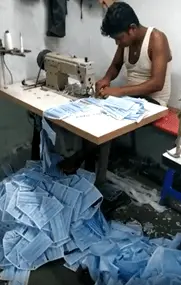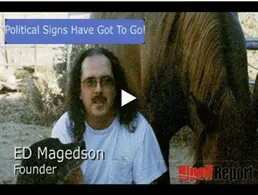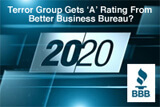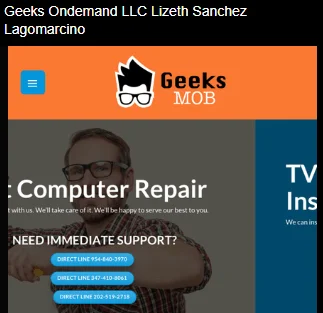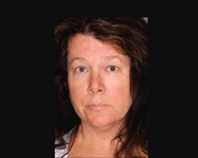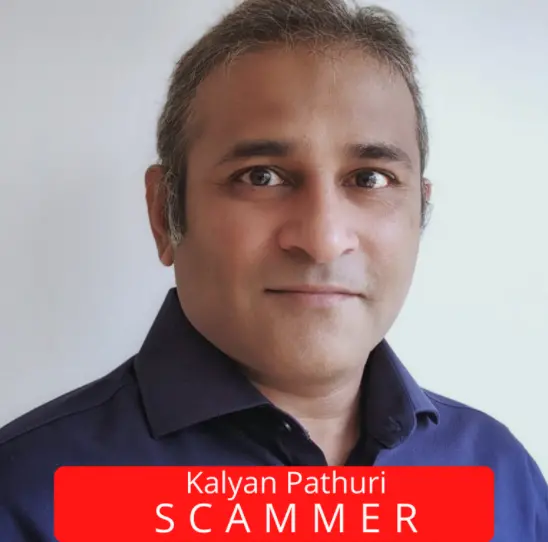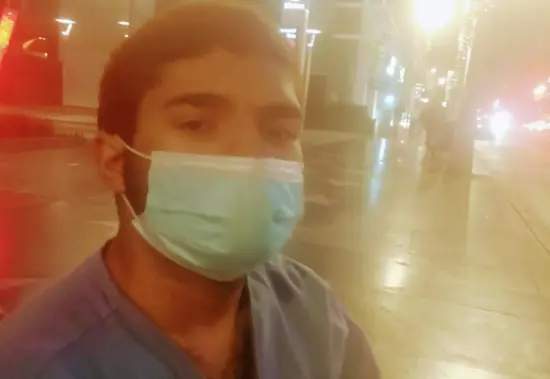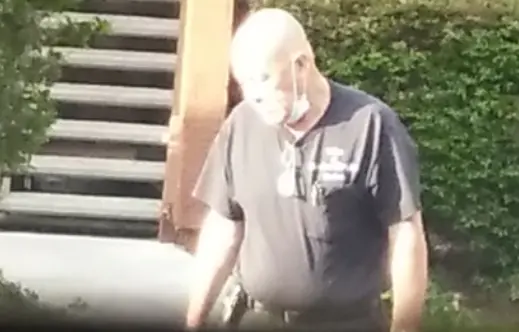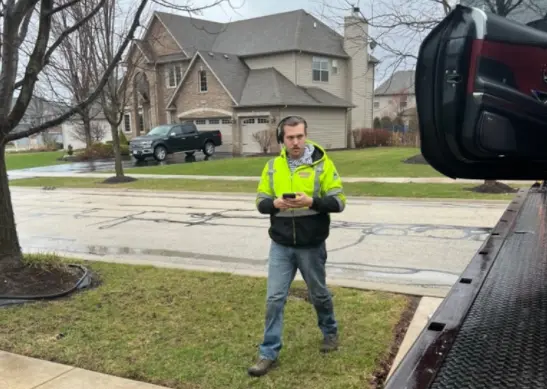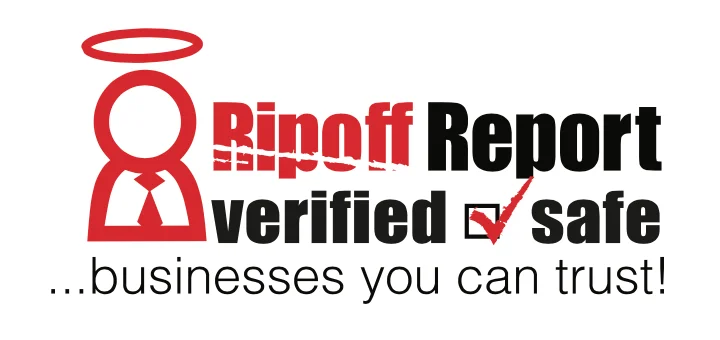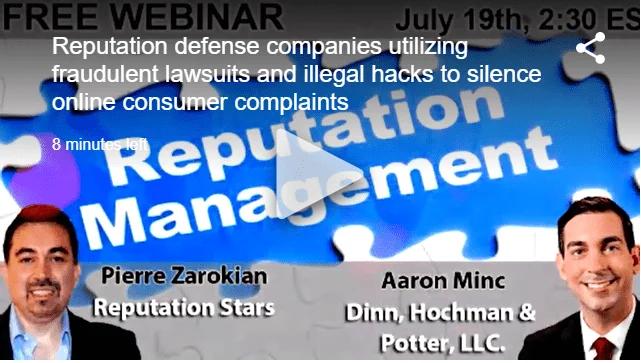Complaint Review: Credit Agricole (Suisse) SA - Singapore -
- Credit Agricole (Suisse) SA - Singapore Singapore
- Phone:
- Web:
- Category: Banks
Credit Agricole ,Suisse, SA - Singapore Former private bankers offered and sold bank clients private stock offering of Amaru, Inc. stock, lost all our money, then denied any involvement and lied about it. Nationwide
listed on other sites?
Those sites steal
Ripoff Report's
content.
We can get those
removed for you!
Find out more here.
Ripoff Report
willing to make a
commitment to
customer satisfaction
Click here now..
The Lying Game – How Can We Ever Trust Our Bankers?!
Introduction:
Where have the days gone when we could have trusted our bank and bankers to safeguard our hard-earned savings with integrity, transparency, and professionalism? These days most of us find ourselves in a constant 24/7 sleepless worry as we stress out over anything from unjustified bank fees or penalties, funds mysteriously missing from our account, or the more prevalent these days, Ponzi schemes, account hackings, and identity theft. However, nothing instills more fear and distrust of banks and bankers into us than reading news about the massive fraud cases happening around the world. Fraud perpetrated by the likes of Bernard Madoff, Allen Stanford, Kazutsugi Nami, and many others, where billions in hard-earned wealth were completely wiped out with thousands of innocent lives destroyed and left helplessly destitute as a result. One only need to Google search "cheating bankers" or, “lying bankers” or, “bank fraud,” etc. on the internet to find hundreds (if not thousands) of articles on the subject. It's truly frightening!
Unfortunately for me, what began in 2005 as an exciting and potentially life-changing turning point in my life, instead turned into a long and horrible nightmare in 2010 after my entire account was virtually wiped out in the hands my former private bankers at Credit Agricole (Suisse) SA – Singapore. A lengthy, complicated, and hard-fought lawsuit subsequently ensued, which took place in Singapore from 2011 to 2016. However, we are still not quite done yet as we are awaiting our appeal of the defense lawyer’s exorbitantly high legal costs bill.
I have now reached the point where I am ready to move on with my life. But before any semblance of closure can be achieved, I felt I needed to share my harrowing experience with the worldwide public, to inform everyone of the clear and present danger in our midst, and to encourage everyone out there to be more vigilant and not to take it for granted that our banks and bankers are always acting in our best interest.
A Brief Background:
Back in 2000, a relative had referred me to the team leader of this Singapore based private banking team who were with another offshore private bank at the time, but transferred to the private bank of Credit Agricole (Suisse) SA – Singapore very shortly after. These three private bankers worked together closely and are the bankers I will be referring to in this write-up.
- “PB1” (Private Banker 1): She was the Team Leader of the private banking team at Credit Agricole (Suisse) SA – Singapore and a witness for the defendant during the court proceedings and at the trial.
- “PB2” (Private Banker 2): She was PB1’s Service Assistant at Credit Agricole (Suisse) SA and a witness for the defendant during the court proceedings and at the trial.
- “Defendant” (Private Banker): He was the designated Account Relationship Manager assigned to service my account at Credit Agricole (Suisse) SA – Singapore. However, most of my communication throughout the banking relationship was with PB1 (due to her close relationship with my relative) and PB2.
Shortly after the referral, I had called PB1 on the phone and informed her that I needed a safe and trustworthy place to keep my money as I was saving up to design and build my very first home to settle down and that I did not want to lose ANY of my capital. Although I did not meet the minimum US$1 million account opening requirement, the bank and bankers were willing to make an exception in my case due to their close relationship with the referring relative. My account was subsequently opened with these bankers in late 2000. However, for the first few years, there were no active investments in the account except for some occasional Foreign Currency transactions that PB1 had recommended to me.
Then came 2005 when a company and stock called “Amaru, Inc.” was first introduced to me by PB1 and the defendant. Numerous specific representations (listed under “My Version of Events”) were made by the defendant which resulted in my three separate purchases totaling 200,000 shares of Amaru. Inc. stock from between March 2005 to January 2006. However, after more than a year had passed and none of the representations had materialized, I then grew increasingly suspicious. I eventually filed my formal complaint with the head of Credit Agricole (Suisse) SA – Singapore in March 2010, which was subsequently forwarded to their head office in Geneva, Switzerland. Having spent several months of back and forth written exchanges with the bank’s head office in Geneva, Switzerland (till early 2011), and having received an unsatisfactory result with my formal complaint, I then commenced legal action against my former private banker (the defendant) in Singapore on February 28, 2011. Note that although PB1 was just as involved in the offering and sale of Amaru, Inc. stock to other clients at the bank and me, it was the defendant who had made the misrepresentations to me, and as such, he was the only defendant named in my lawsuit.
My lawsuit against the defendant concerned numerous negligent verbal misrepresentations that he had made about Amaru, Inc. at a meeting held in PB1's office (with PB1 present) at the private bank of Credit Agricole (Suisse) SA - Singapore on the morning of March 4, 2005. Substantial losses to my account were incurred due to these misrepresentations.
Unfortunately, my case (trial date - April 2016) against the defendant was surprisingly dismissed by the Singapore Courts in December 2016. However, I feel that there is an overwhelming list of verifiable documented facts, evidence, blatant lies, inconsistencies, and ridiculous defense testimonies on public record to incontrovertibly show that these bankers had lied under oath, and this is what I want to be made known to the world. I may have lost this first battle, but I have not lost the war.
For the record, I had been nothing but honest, truthful, and transparent throughout the entire court proceedings and at the trial. And as such, I'd be more than willing to take a polygraph test to prove this. If the defendant and his witnesses insist that they have indeed been truthful, then they should have no qualms whatsoever about also submitting to a polygraph test. I now submit the following and will let the public decide whether justice was done.
My Version of Events:
I was living in Vancouver, Canada at the time and had just arrived back to Kuala Lumpur, Malaysia to visit relatives for the February 2005 Chinese New Year holidays. I had met up with a relative at his office, and the first thing he asked me was whether PB1 or the defendant had mentioned anything to me about a hot stock that they had highly recommended and gotten him to buy? I replied, no. I then asked him what it was all about, but he was too busy at the time and insisted that I give PB1 a call to get all the details. Shortly after lunch that day, I called PB1, but she told me that she could not discuss this over the phone and to come in to meet at her office at the bank in Singapore. I subsequently extended my transit stay in Singapore on my way back to Vancouver, Canada. The meeting at the private bank of Credit Agricole (Suisse) SA – Singapore was confirmed for the morning of March 4, 2005, and took place in PB1's office with both PB1 and the defendant present.
At this meeting, the defendant gave what I would describe as his "SALES PITCH" where he had made numerous specific representations regarding a stock called Amaru, Inc. that they were actively promoting to their private clients at the bank. The representations made to me were:
- That the bankers were assisting Amaru, Inc.'s CEO (Colin Binny) to raise funds for the company through a private offering of Amaru, Inc. stock at US$3 per share;
- That the company was to be listed on the US NASDAQ Stock Exchange in 12-18 months, and that I would be able to sell my shares immediately upon listing;
- That the projected price target for the stock after listing would be between $15-20 from an initial investment purchase price of $3 per share, but that we would sell our shares at around $11-12 so as not to be too greedy;
- That the defendant had a close relationship with Amaru, Inc.'s CEO (Colin Binny) and therefore had easy access to the latest news updates and non-public information.
Immediately after the defendant’s sales pitch, I had expressed an interest to purchase 150,000 shares of Amaru, Inc. stock, but was told by PB1 that their stock allocation was insufficient to satisfy my request. PB1 informed me that she only had 100,000 shares left in their allocation and would let me know as soon as another 50,000 shares became available. I agreed, and PB1 immediately called PB2 into her office and instructed her to draft the letter of instruction to purchase the first 100,000 shares of Amaru, Inc. stock. Some 5 minutes later, PB2 returned to PB1's office with the letter of instruction dated March 4, 2005 (Please see the FIRST LETTER OF INSTRUCTION under Bankers’ Version of Events) and placed it on PB1's desk for me to sign in the presence of the defendant, PB1, and PB2. (Note that because this first letter of instruction was signed at the bank in the presence of all three bankers that there were no fax markings (time stamps) on it.)
A couple or so weeks later, I was contacted by one of the bankers and informed that the further 50,000 Amaru, Inc. shares were available. The second letter of instruction (dated March 23, 2005) was this time drafted and e-mailed to me by PB2 since I was already back in Vancouver, Canada at this time. I then signed this letter of instruction and faxed it back to PB2 at the bank in Singapore, as instructed by her. (Note that this second letter of instruction included fax markings (time stamp) which corresponded precisely to account for the time difference between Vancouver, Canada and Singapore.)
In late 2005, I was back in Asia visiting for the year-end holidays and had met up for lunch with PB1 and the defendant in Singapore. This was when the defendant told me that he and Colin Binny (the then CEO of Amaru, Inc.) were Singapore "army buddies" and therefore they knew each other well. I then took the opportunity to mention my parents’ interest in purchasing some Amaru, Inc. stock and asked PB1 if they had an additional 22,000 shares available? PB1 told me they did not, but that she would see what could be arranged.
A week or two later, I called PB1 to follow up, and she informed me that they had asked Colin Binny for a "special favor," and that he had agreed to sell me some of his Amaru, Inc. stock at US$4.30 per share. But, since the stock only came in 50,000 share blocks, that this was the minimum number of shares I would have to purchase. I agreed, proceeded to raise funds, and completed the purchase in January 2006. PB2 e-mailed to me this third letter of instruction dated January 9, 2006, to purchase these 50,000 shares of Amaru, Inc. stock. Since I was in Kuala Lumpur, Malaysia at the time, this was where I received, signed, and faxed the third letter of instruction back to PB2 at the bank in Singapore. (Note that this third letter of instruction once again included fax markings (time stamp) – there is no time difference between Kuala Lumpur, Malaysia, and Singapore). All together I had purchased a total of 200,000 Amaru, Inc. shares through these bankers.
By late January 2006, I had not seen or heard anything in the news about the NASDAQ listing and so, out of curiosity, I called the defendant to ask him what was going on? The defendant replied that he did not know and assured me that he would make it a point to call Colin Binny to find out. A week or so later, I called the defendant to follow up, and he told me that he had talked to Colin Binny and learned that he had changed his mind and was now applying for US AMEX (American Stock Exchange) listing instead. I did not make a fuss about it as I knew the AMEX was just as credible as the NASDAQ Stock Exchange.
By mid-2006 to early 2007, I had complained so incessantly to PB1 and the defendant about the steady and relentless decline in Amaru, Inc.'s stock price, and how none of the representations were materializing, that they had become distant and indifferent toward me. All my calls and e-mails to them were ignored, and as such, PB2 was my only contact left at the bank. News and other updates from the bankers to all their other clients had also dried up. It was some months later that I then started giving some thought to filing a formal complaint with the head of the bank in Singapore.
Months flew by, and on January 19, 2007, a company news release reported that Amaru, Inc. had only achieved a lowly OTC BB (Over the Counter - Bulletin Board) Exchange listing! I was shocked and immediately called PB2 to ask her what was going on and whether I should then just cut my losses and sell my Amaru, Inc. stock? She told me to hang on as good news was forthcoming and that the stock would go right back up. She then proceeded to tell me that I was not able to sell my Amaru, Inc. stock anyway because it was RESTRICTED and that I had to wait for the TWO-YEAR stock restriction to be lifted before I could sell it! NEVER FROM THE VERY BEGINNING WAS I INFORMED ABOUT THIS TWO-YEAR STOCK RESTRICTION!
By the second half of 2007, I had mentioned to my relative that I was thinking of filing a formal complaint with the bank. Word of this had reached the bankers, and at first, PB1 asked my relative for my phone number in Canada as she had wanted to have a word with me. However, I never heard from either of the bankers. I then contacted my relative who told me that the bank's lawyers had advised both PB1 and the defendant not to talk to me at all. It was from then on that I began drafting my formal letter of complaint to the bank. However, my relative suggested that I hold off submitting anything until he had a chance to talk to the bankers to get a clear picture from them as to what was happening regarding this stock they had so strongly recommended to all of us.
It took me much longer than expected to draft my letter of complaint as I had to recall all the relevant details and timeline of events as accurately as possible. Unfortunately, things dragged out for about three years; much longer than I had planned. However, in March 2010 I finally e-mailed my formal complaint to Mr. R. Feser, the then head of Credit Agricole (Suisse) SA – Singapore, which was then sent to the bank’s head office in Geneva, Switzerland.
Within an hour or so of submitting my formal letter of complaint, I then received an e-mail from my relative and was told that PB1 had called to inform him about my formal complaint to the bank (Whatever happened to banking secrecy?). He then mentioned that both the defendant and PB1 had been called into Mr. R. Feser’s office to give their explanation and that the defendant was subsequently instructed to write up an incident report which was also forwarded to the bank's head office in Geneva, Switzerland.
Some weeks later, I received a reply letter from the bank's head office in Geneva, Switzerland where they denied that the bank or bankers had any involvement in the Amaru, Inc. stock offering to me. They also insisted that I had purchased the Amaru, Inc. stock on my own, that there was never a mandate for the bankers to offer and sell Amaru, Inc. stock to customers of the bank, and that they had never received any commissions from my purchase of the stock. (If the bank never received any commissions, then who did?) What shocked me the most, however, was how they mentioned that I had studied Economics at the at the University of Southern California and had received an MBA from Harvard University. They then further mentioned that I was a savvy, experienced, and knowledgeable stock investor, had extensive dotcom stock trading experience and that I had a penchant for high-risk investments (I am very curious as to what they based all this on?). And, because of these reasons, the bank dismissed my complaint.
(If I was such a savvy investor, why would I purchase this stock on my own through the bank when firstly, it would have been frustratingly inconvenient because of the different time zones and bank hours of operation versus the US stock market hours. Secondly, why would I use the bank to buy and sell large quantities of shares when the bank’s fees and commissions are at least ten to twenty times that of a US broker?)
After I had discovered that the defendant lied about me in his incident report to the bank, I was more determined than ever to fight this case. I had even replied to the bank's letter and demonstrated to them that the defendant had lied about my education and investment backgrounds, but they were adamant in maintaining their position, “REGARDLESS!” Meaning, they acknowledged, accepted, and condoned the defendant’s lies to them.
I commenced my lawsuit against the bank and defendant in February 2011 but subsequently withdrew naming the bank as a defendant shortly after as they were protected under Swiss jurisdiction laws. The defense lawyers then immediately filed a stay application trying to prevent my lawsuit from proceeding in Singapore, to make the costs as prohibitive and the logistics as inconvenient for me as possible. The defendant had claimed that under the terms and conditions of the account opening application form I had signed with the bank, that he was entitled to benefit from Swiss Law even though he was a Singapore Citizen, resided in and was employed in Singapore. And, to make it appear as though the incident took place in Geneva, Switzerland (for jurisdiction reasons), the defendant had even gone as far as to claim that my first letter of instruction was personally faxed by me directly to the bank's head office in Geneva, Switzerland. The defendant further claimed that Geneva, Switzerland was where the instructions were received, processed, and carried out, and therefore, Singapore was not the appropriate forum for the legal proceedings and trial to take place. (These senseless claims were made although my account was opened and was at all times maintained at the bank's Singapore branch only.)
In brief, the Singapore Courts did not believe the defendant’s story and quickly dismissed their stay application. The defense subsequently appealed the decision and even threw in an anti-suit injunction into the mix, but their appeal was just as quickly dismissed, and their anti-suit injunction rejected. Incidentally, the anti-suit injunction was filed to prevent me from later using the same lawsuit against the bank in Geneva, Switzerland, should I have succeeded in my lawsuit against the defendant in Singapore. The trial took place in April 2016, lasted for two weeks, and was then adjourned to August 2016 to facilitate the Swiss Law Experts giving their legal opinions as to whether Swiss law applied to this case.
The Bankers' Version of Events – The Lies and Inconsistencies:
1) The defendant, PB1, and PB2 ALL denied that there was ever a meeting at the bank on the morning of March 4, 2005.
The bankers claimed that there was never any meeting between them and myself on the morning of March 4, 2005, (supposedly) because PB1 and the defendant had already left the office by 10.30am and had stopped off to buy fruits for a client they were meeting at around noon. The defendant had only produced into evidence a car park stub which indicated that they (or someone) had entered a parking garage located in the city at 11.58am.
I recall that the meeting on March 4, 2005, started at approximately 10.30am, and likely a little earlier since I always make it a habit of showing up 10-15 minutes early for my meetings. It lasted for about 1 hour - about 30 minutes for the sales pitch, 10-15 minutes for chitchat on personal matters, and about 5 minutes for PB2 to draft the letter of instruction for me to sign. Incidentally, the defense lawyer tried to discredit me by insisting that 50 minutes was NOT ABOUT 1 hour! (Seriously?!)
(It should be noted that if the bankers had not stopped off to buy fruits from between 10.30-11.30am, then there would have been plenty of time for the meeting in PB1’s office, and to make it to the parking garage in the city at 11.58am. Incidentally, there were NO receipts for the purchase of fruits entered into evidence, plus there was NO proof that the parking stub even belonged to the defendant.)
2) The defendant, PB1, and PB2 ALL denied that any representations regarding Amaru, Inc. were ever made to me at all.
The defense claimed that there were never any representations made to me regarding Amaru, Inc. and that none of the bankers had spoken to me before March 23, 2005, the date of the second letter of instruction to purchase Amaru, Inc. stock. Unfortunately, these specific representations were a matter of "he said, she said," and given the lack of black and white documented evidence, were difficult to prove. The defense further claimed that I had purchased the Amaru, Inc. stock on my own after my relative had discussed its details with me. THIS WAS ABSOLUTELY NOT THE CASE.
(It is now clear why the defendant had not allowed me to take home the printed articles about Amaru, Inc. that he had shown to me at the meeting. He had also insisted that we only communicate using personal e-mail and would always have me call them back on their cell phones when discussing anything to do with Amaru, Inc; presumably, because phone calls to and from the bank are routinely recorded.)
The one CRUCIAL PIECE OF EVIDENCE in the case was the FIRST LETTER OF INSTRUCTION dated March 4, 2005:
4 March 2005
Ms. Jane h*o
Credit Agricole Indosuez (Suisse) SA
Geneva
SWITZERLAND
Dear Sirs,
1277950
Please accept this letter as your authority to sell the equities in my subject account to purchase 100,000 M2B shares at $3 per share and custodise the shares in subject account accordingly.
Should the equity sale proceeds be insufficient, please debit the shortfall from the
Canadian $161,233 fiduciary placement accordingly.
Thank you
Very Truly yours,
3) The first letter of instruction dated March 4, 2005, had instructed the purchase of "M2B SHARES" and yet the bankers inexplicably purchased Amaru, Inc. shares.
A. PB2 testified that she simply found my first letter of instruction on her desk shortly after she returned from lunch on March 4, 2005. She further testified that she then checked the US stock market and determined that there was insufficient trade volume to fill my stock purchase order, and immediately called PB1 to inform her of this and to get further instructions. Note that this was just after lunch on March 4, 2005, Singapore time.
PB2’S TESTIMONY CANNOT BE TRUE because firstly, the US stock markets were, at this time, not even open yet. Secondly and most importantly, THE LETTER OF INSTRUCTION HAD SPECIFIED TO PURCHASE “M2B” SHARES. HOWEVER, THERE IS NO SUCH STOCK AS “M2B” TRADED ON ANY OF THE US STOCK EXCHANGES! HOW THEN WAS IT POSSIBLE FOR PB2 TO HAVE CHECKED THE TRADE VOLUME OF A NON-EXISTENT STOCK?! Thirdly, note that the first letter of instruction mentions only vaguely "to sell the equities in my subject account,” but does not specify which equities to sell and in what quantities. How possibly could PB2 have known which equities to sell in the account and at what quantities IF IT WERE NOT SPECIFICALLY DISCUSSED AND AGREED TO BEFOREHAND?
B. The defendant first testified that he was instructed by PB1 to look for the shares from someplace else since PB2 had informed her that there was insufficient trade volume on the US market to fill my order (despite the US Markets being closed at this time). The defendant further testified that he then proceeded to directly contact Amaru, Inc.’s investor relations department (in Singapore) to have them find a willing seller of Amaru, Inc. stock. Note that, based on the bankers’ version of events, I WAS NEVER INFORMED AND CONSULTED ABOUT ANY OF THIS, AND MY PRIOR AUTHORIZATION WAS NEVER OBTAINED.
The defendant was then questioned in court by my lawyer as to how he had managed to purchase Amaru, Inc. shares when the instructions specifically stated to purchase “M2B” shares? Particularly, when he had already claimed that none of them had ever spoken to me prior to March 23, 2005, the date of my second purchase of Amaru, Inc. stock. The defendant’s response was that he DID NOT LIKE TO BOTHER CLIENTS WITH SMALL MATTERS, AND THAT HE SIMPLY ASSUMED THAT I WAS REFERRING TO AMARU, INC.
(How was it possible for the defendant to have correctly ASSUMED what my vague letter of instruction was referring to without ever speaking to me about it to clarify or, for that matter, request an amendment for obvious bank liability reasons? Firstly, there are dozens of companies (if not more) sporting the name "M2B" in various forms, and from what I have researched, M2B is not a publicly traded company on any stock exchange in the world. But what makes it even more incredible is the fact that, early on in the proceedings, the defendant had claimed that he had never even heard of Amaru, Inc. before I first purchased the shares! The simplest and most logical explanation is that the bankers knew precisely what stock was to be purchased, and from where, as they were all VERY MUCH INVOLVED in the promotion, offer, and sale of Amaru, Inc. stock to me at the meeting on March 4, 2005.)
(From the defendant’s and PB2’s very own court testimony above, they had clearly received, processed, and carried out the instructions in Singapore. This is inconsistent with their original version of events where they had claimed that the instructions were received, processed, and carried out at the bank in Geneva, Switzerland.)
4) The defendant denied that he had ever heard of Amaru, Inc. before I first purchased the shares on March 4, 2005, and yet his wife and brother owned substantial stakes in Amaru, Inc. stock as of February 13, 2004, and these bankers had promoted and sold Amaru, Inc. shares to other clients at the bank before me.
A. According to SEC (US Securities and Exchange Commission) documents filed on February 13, 2004, the defendant's wife held 1,486,014 (or 7.43%) pre-split shares of Amaru, Inc.'s common stock, and his brother held 1,460,315 (or 7.80%) pre-split shares of Amaru, Inc.'s common stock. This information was not disclosed beforehand to me or any of the bankers' other clients (that I know of) who were offered and sold Amaru, Inc. stock, and is a clear and serious CONFLICT OF INTEREST. When faced with this evidence, the defendant acted surprised and testified that he was unaware of this SEC filing information and that this was the first time he had come to hear of his wife and brother's substantial shareholding in Amaru, Inc. stock.
My lawyer then questioned the defendant as to why his wife would be holding such a substantial stake in Amaru, Inc. stock, and was given the opportunity to ask her later that evening. The following day the defendant returned to the stand and testified that his wife was entirely unaware that she was a substantial shareholder in Amaru, Inc. stock, and that she didn't even know where she had kept the Amaru, Inc. stock certificates. The defendant then explained that his deceased brother, when still alive, would regularly have his wife blindly sign documents and not tell her what exactly it was she was signing, and that whatever she signed and held for his brother was for the eventual benefit of their mother.
(The defendant’s testimony sounds like a highly suspicious and convenient story. Firstly, who would own millions of dollars’ worth of a stock and not know about it or where it was kept? Secondly, how would the defendant’s wife now know that the shares were meant for the defendant’s mother if she didn’t even know what the documents were that the defendant’s late brother had her sign? Thirdly, this seems like a highly unusual route to take in making their mother the beneficiary of these shares. The much simpler and more logical way would have been to just will it directly to the mother as the defendant's wife could easily have claimed the shares for herself otherwise. Fourthly, the wife’s substantial stake in Amaru, Inc. stock makes it very difficult to believe that the defendant was totally unfamiliar with Amaru, Inc. prior to March 4, 2005. Fifthly, the defendant had not even produced into evidence a "beneficiary note" signed and dated by his deceased brother and wife, naming their mother as the beneficiary of this substantial Amaru, Inc. stockholding.)
B. The defendant and PB1 separately testified that several of their clients had purchased Amaru, Inc. stock between 2004 and 2006. PB1 testified that of the five of her clients she knew who had bought Amaru, Inc. stock during this period, all had contact with the defendant, and at least one had purchased the stock prior to March 4, 2005. This effectively confirms that both the defendant and PB1 had heard of and were (at least somewhat) familiar with Amaru, Inc. prior to this date.
C. At least five witnesses were to testify on my behalf, but only two of them appeared in court.
Witness 1, a former client (whom I had never met before the trial), testified that both the defendant and PB1 (but mostly the defendant) had started contacting him sometime in 2004 to 2005 and were constantly "pestering" him to buy Amaru, Inc. stock. Similar representations were made to him, such as the impending US NASDAQ stock exchange listing and that he would realize a very substantial profit from this investment.
(Witness 1, to me, seemed like a very sincere person. As such, it was rather disturbing to see this grown man so emotionally traumatized by the defense lawyer's callous line of questioning which repeatedly reminded the witness of the substantial losses (approximately US$2 million) of his hard-earned money incurred from the purchase of Amaru, Inc. stock.)
D. Three of the five witnesses (Witness 2, 3, and 4) who chose not to appear in court are also private banking clients at this bank, with their accounts serviced by these SAME BANKERS. At least two of them also had Amaru, Inc. stock promoted and sold to them by these bankers before March 4, 2005, and with the same (or very similar) representations made.
Witness 2 is an elderly lady and mutual friend of Witness 3. Sometime in mid-2015, she told me that these bankers had so irresponsibly put her into several high-risk investments, including Amaru, Inc. stock. And consequently, that she was now in dire straits because they had lost most of the inheritance money that her late husband had left to her; money that she depended substantially on for her livelihood. She also added that, due to the immense stress and anxiety caused to her by these bankers, she had developed a brain tumor and was undergoing treatment. Unfortunately, Witness 2 called me in early February 2016 and informed me that PB1 had offered to pay her US$200,000 by Chinese New Year (February 8, 2016) and more by March or April. And, for this reason, she chose not to get involved in any lawsuits against the bank or bankers.
Witness 3 is a relative and Witness 4, his business partner. They also had Amaru, Inc. promoted and sold to them before March 4, 2005, and with the same (if not more) representations made. These two witnesses eventually decided NOT to testify at the trial due to their own personal reasons.
(This further proves that the bankers had definitely heard of and were very familiar with Amaru, Inc. prior to this date. Incidentally, the combined total losses incurred by these three witnesses alone totaled in the multi-millions of US Dollars.)
E. The Chairman of Amaru, Inc. (Mr. Sakae Torisawa) is the defendant's private banking client at Credit Agricole (Suisse) SA - Singapore.
A search of the Singapore Registered Companies Database revealed that the defendant's wife was a co-director of a private Singapore company called “121View Corporation (SEA) Pte. Ltd.,” along with at least two members of Amaru, Inc.’s senior management; S. Torisawa being one of them. The defendant was asked in court what his relationship was with S. Torisawa? He had initially refused to answer this question, citing banking secrecy, but the judge then ordered him to do so. After a long pause, the defendant reluctantly revealed that S. Torisawa was his (private banking) customer at the bank.
(Note that it is the private banker's responsibility to know their clients' backgrounds as they are required to fill out a detailed "know-your-client" form after the opening of accounts. Therefore, the defendant must have known that S. Torisawa was the Chairman of Amaru, Inc., and knowing this, he had heard of and was at least somewhat familiar with Amaru, Inc.)
5) The defendant denied knowing Colin Binny (the then CEO of Amaru, Inc.) before March 4, 2005, and claims that they had not met until sometime in the second half of 2005.
The defendant testified that he first met Colin Binny at a business event that he attended with his wife in the second half of 2005. I submit the following factual evidence which emerged during the proceedings and at the trial.
A. Witness 5 (whom I had also never met before the trial) testified that he was the defendant's “friend” and also a business associate of Colin Binny. He was one of the early on shareholders of a private company called "M2B World" before its reverse merger into Amaru, Inc. in February 2004. Witness 5 testified that, since before the reverse merger, he would REGULARLY go down to Colin Binny’s office (as Witness 5’s office was in the same building and just one floor above) to have "casual" discussions with Colin Binny on matters related to Amaru, Inc. and that the defendant would often be present at these meetings. Specifically, their discussions were about how Witness 5’s stock was doing and the defendant’s progress at "pushing" the stock’s price up (since this was the defendant’s area of expertise). This evidence confirms that the defendant definitely knew Colin Binny and had heard of (and was familiar with) Amaru, Inc. prior to March 4, 2005, the date when I first purchased the Amaru, Inc. shares.
As Witness 5 was giving his testimony regarding the regular meetings at Colin Binny's office with the defendant present, the defense lawyer interjected and took the defendant’s instruction to tell Witness 5 that THEY DID NOT MEET AS REGULARLY AS HE HAD CLAIMED. This statement effectively confirmed that the defendant DID, in fact, attend most (or some) of these meetings.
B. Immediately following Witness 5, it was Colin Binny’s turn to take the stand. During his testimony, Colin Binny testified that there were NEVER any such meetings at all between him, Witness 5, and the defendant.
C. Immediately after Colin Binny, it was the defendant's turn to take the stand. The defendant was faced with Witness 5's earlier testimony about these REGULAR MEETINGS at Colin Binny's office. However, after having heard Colin Binny's earlier denial of any such meetings ever occurring, the defendant then changed his story and also denied that there were EVER any such meetings.....BUSTED!!! My lawyer then reminded the defendant that just moments ago, his lawyer had taken his instruction and told the court (while Witness 5 was on the stand) that the meetings did not occur AS REGULARLY as Witness 5 had stated. The defendant's only reply to this was that his lawyer was “JUST PUTTING IT NICELY.”
6) The defendant had lied about my educational background and investment experience in his incident report to the bank’s head office in Geneva, Switzerland.
The defendant told the bank (in his report) that I had studied Economics at the University of Southern California, completed an MBA at Harvard University, and that I was an “experienced” stock investor/trader. (Note that there is a difference between someone who is “experienced” and someone who has some “experience”). For the record, I had never attended or studied Economics at the University of Southern California, and I certainly never received an MBA from Harvard University. I studied Architecture and Design at the University of Colorado at Boulder, the University of California at Berkeley, and Harvard University. And, although I had some keen interest in stock investing, I was still only a novice at best, and could hardly be considered an "experienced," "savvy," or “sophisticated” investor.
My legal advisers informed me that the defendant had done this to intentionally mislead the bank as they (as a matter of policy) view such customer complaints differently based on their educational background and finance and investment knowledge, etc., and not just on the merits of the complaint. The bank had obviously dismissed my formal complaint based on the false information given to them by the defendant.
7) The defendant had stated in his first Security for Costs affidavit that he was PERSONALLY PAYING his own legal bills in this lawsuit.
During a subsequent “security for costs” application hearing (to further exhaust me financially), there was a question posed by the court registrar to the defense lawyer as to why they would be taking instructions from the bank when this lawsuit was only against the defendant? The defense lawyer then inadvertently revealed to the court that it was, in fact, the bank that was financing the defendant's legal bills……BUSTED again!!!
(The defendant was obviously trying to deceive the court to elicit sympathy to have the maximum security for costs ordered against me. Moreover, this also shows the defense lawyers knew beforehand that the defendant had lied on his affidavit and, yet they kept quiet about it.)
8) The bankers paid US$3 for RESTRICTED Amaru, Inc. stock when it was, at that time, available and trading on the US stock exchange at only about US$1.20 per share, and UNRESTRICTED.
During cross-examination of PB1, she was questioned as to why they paid US$3 for the Amaru, Inc. shares when it was, at that time, available and trading on the US market at only about US$1.20 per share? She first testified that there was insufficient volume traded on the open market, and this was the reason she had, ON HER OWN VOLITION, instructed the defendant to look for the shares from someplace else. Regarding the discrepancy in the stock price, PB1 then proceeded to state that, their clients were all very sophisticated investors and that she did not want to "INSULT THEIR INTELLIGENCE" by telling them that they could have purchased the shares at a much lower price. (How utterly preposterous!)
Most importantly, however, the bankers had purchased RESTRICTED Amaru, Inc. stock without having informed or consulted me, or obtained my prior authorization. This meant that the stock would be locked up for TWO YEARS from the date of first purchase. I, therefore, would NOT have been able to sell the stock until only after this lock-up period had expired and the restrictive legend on the stock certificate removed. This method of buying and selling stock would obviously have been very inefficient and impractical, particularly if a "savvy," “sophisticated,” or “experienced” investor client, wanted to sell their stock quickly. Note that I had only found out about this stock restriction more than 1-1/2 years later in January of 2007 when PB2 informed me about it.
9) The defense had produced into evidence a contemporaneous e-mail dated March 8, 2005, to strongly suggest the occurrence of the meeting on March 4, 2005.
During PB1's cross-examination, the defense had produced into evidence an e-mail (dated March 8, 2005) from me to PB1 that referred to the shortfall amount of 50,000 Amaru, Inc. shares. Specifically, the e-mail referred to the calculations that PB2 and I had earlier done to arrange the funds needed to cover the payment of these additional shares when they became available. This is consistent with my version of events where PB1 had informed me at the meeting on March 4, 2005, that they did not have sufficient Amaru, Inc. stock in their allocation to satisfy the 150,000 shares I told her I would take up. PB1 was questioned by my lawyer as to why I would be e-mailing her and talking in these terms when, according to her, we never spoke or had any contact at all, at least prior to the purchase of the second lot of Amaru, Inc. stock on March 23, 2005? Her only response was that she "CANNOT EXPLAIN ANOTHER PERSON'S BEHAVIOUR."
10) The bankers were inconsistent about how my first letter of instruction dated March 4, 2005, was received by the bank.
A. The first letter of instruction dated March 4, 2005 (See under Bankers’ Version of Events), entered into evidence contained much invaluable information. Recall that at the very beginning of my lawsuit, the bankers had claimed that the first letter of instruction was faxed by me directly to the bank's head office in Geneva, Switzerland. When we challenged their claim with the fact that the letter did not contain any fax markings (timestamps), as was found on all other correspondences that were faxed to the bank in Singapore, it was then that their story changed. The bankers then suggested that the office fax machine may not have been working properly that day or that I could have personally hand-delivered the letter to the bank, which would account for the letter not containing any fax markings.
(Really?! Who exactly is the private banking client here? Does anybody honestly believe that a PRIVATE BANKING CLIENT would fly all the way to Singapore, take the trouble of finding their way to the bank, just to drop off a letter of instruction at the bank's front desk without even meeting or talking to any of their bankers? Why wouldn't I just have faxed in the letter of instruction instead?)
B. The story then changed once again when PB2 testified in court that she simply found the letter of instruction (in an envelope) on her desk after she had returned from lunch on March 4, 2005. Note that for the years leading up to the trial there was no further evidence given by the defense to suggest a viable alternative to the bankers' original story on how the first letter of instruction was received.
11) PB2 denied that she had drafted the first letter of instruction dated March 4, 2005.
A. My lawyer, therefore, questioned PB2 as to how I could have obtained the exact Fiduciary Placement (Fixed Deposit or FD, in layman's terms) amount of Canadian $161,233 specified in the first letter instruction? There was no way I could have known (or had in my possession) this exact figure on March 4th, 2005. The reason being, my monthly account statements are only mailed out from Geneva, Switzerland after the end of each month (in this case, after February 28, 2005), which means that I would have only received my account statement a week or two after February 28, 2005. PB2 had even verbally agreed that I could NOT have known this precise number on my own. She then testified that I “COULD HAVE” called her to inquire about my account balances after February 28, 2005, and before March 4, 2005. Because of PB2’s vague response, my lawyer then proceeded to ask her numerous times for a SPECIFIC answer to this simple question - DID I or DID I NOT call her during this period to inquire about my account balance? PB2 continued to be evasive as she kept responding with "HE COULD HAVE," or "HE SHOULD HAVE," or "HE MUST HAVE" called to request this precise figure. NEVER was she able to give a straightforward and specific answer that I "DID" call her. (This is because the call never happened! And besides, why would I have needed to mention the precise account balance figure in my instruction?)
B. Note that the first letter of instruction was addressed to a "Jane h*o" at Credit Agricole in Geneva, Switzerland. Firstly, I do not know any Jane h*o and nor have I ever met or spoken to this person. Furthermore, the bank does not post the names of all the bank’s officers on their website. How then could I have known to address my letter of instruction to this person when only the bankers would have known internally this specific person? Secondly, if I had indeed hand-delivered the letter of instruction to the bank in Singapore, then why would I be addressing it to some unknown person at the bank in Geneva, Switzerland and not someone at MY bank in Singapore? Thirdly, the second letter of instruction dated March 23, 2005, (to purchase the second lot of Amaru, Inc. stock) that PB2 had e-mailed to me to sign and fax back to her, was drafted in the same format. That is, it also CONTAINED THE RECIPIENT NAME OF “JANE h*o” AND ADDRESS OF THE BANK IN GENEVA, SWITZERLAND.
C. PB2 testified that the first letter of instruction dated March 4, 2005, was not written in her "language." (I'm sure that everybody will agree that it certainly sounds like a banker's language, as it is clearly NOT mine, especially when compared to the language of this write-up). For instance, note that the letter of instruction mentions to "CUSTODISE the shares in subject account accordingly.” Incidentally, is there even such a word as “CUSTODISE” in the English dictionary? The only place I can find this word on the internet is on a Singapore based banking and financial website, so it is most definitely not a layman's vocabulary.
(Curiously, why even mention to “custodise” the shares when stocks purchased from the US open market are scriptless (i.e., no physical stock certificate) and held electronically? Somebody must have known beforehand that the shares were going to be bought off-market!)
Swiss Law Is Not Applicable:
The defendant claimed that he had the right to benefit from Swiss Law because he was an employee of a Swiss bank (based in Singapore) and because the clause in the account opening application terms and conditions provided for it. Based on the two Swiss Law experts’ legal opinions at the trial, the legalities are somewhat technical, but essentially, under Swiss and Singapore laws, particularly where a tort (a wrongful act) is involved, employees of the bank cannot benefit from this clause. This exclusion is not only because of the jurisdiction laws in Singapore but mainly because Swiss law overrides any terms and conditions (even in a signed agreement with the bank) as long as it contravenes their local laws. In other words, an employee of a Swiss bank based in Singapore can be sued personally and locally, particularly when a tort is involved.
The Defense Lawyers:
The classic dirty tactic a litigation lawyer will use when their client has a weak case is first to try and drag out the case for as long as possible in an attempt to exhaust the opponents mentally and financially to force them into early capitulation. Should the case reach trial, then the next classic strategy used is to Deceive and Distract the court and Discredit the opponents by whatever means possible. True to form, the defense lawyer spent countless boring hours bombarding the court with as much irrelevant and inconsequential "dirt" as possible to muddy the facts of the case in hopes that at least some of their dirt would stick, often frustrating the judge in the process. Furthermore, he spent a considerable amount of time trying to discredit our expert witnesses and me (despite having repeatedly been warned by the judge not to discredit the experts). He was relentlessly vexatious in accusing me of making things up and had even accused one of our experts of colluding with me to concoct our stories! However, I must give due credit to the lead defense lawyer in this case as he was just doing his job, and he did quite a decent job at this dirty litigation tactic.
The Bank:
Our Swiss legal expert was puzzled as to why the bank would be fighting me so vigorously over such a relatively small amount of money when it was plainly obvious that their employees had done something wrong. He then speculated that perhaps the bank was not licensed at the time. At his suggestion, I then contacted the Monetary Authority of Singapore (MAS) to request more detailed information on precisely when the bank obtained their license to operate in Singapore? From the MAS's responses to me, it appears that true enough, Credit Agricole (Suisse) SA - Singapore had NOT obtained their Singapore Offshore Banking License until sometime toward the end of March 2005; well after the date these bankers had promoted and sold Amaru, Inc. stock to their bank clients and me. (I suspect the authorities will want to investigate this.)
In Conclusion:
Needless to say, I was rather surprised by the judge's decision to dismiss my case outright. However, with all due respect, I will not criticize her decision as I am sure she judiciously made the best decision she could, under the circumstances. My lawyer had advised that, given the overwhelming evidence, I could very well have appealed the dismissal and would very likely have succeeded in convincing the appeals court judges that the meeting did occur on March 4, 2005. However, they were not likely to have overturned the trial court judge's decision as she was the one who had the benefit of hearing the trial. Also, the appeal process would have been a long and costly one, and I have already well exceeded my litigation budget.
At this point, we are still dealing with the court ordered legal costs matter. That is, since my case was dismissed, I was ordered to pay most of the defense’s legal costs. However, a considerable amount of time and money was wasted by the defense’s harping on the Swiss Law point, which turned out to be inapplicable in this case. Furthermore, I was advised that the defense’s legal bill still exceeds the Singapore Court’s specified guidelines for claimable legal costs. As such, we have appealed the defense lawyer's ridiculously exorbitant (and obviously inflated) legal costs bill, and we are now awaiting the next appeal hearing on this matter before the judge in February 2018.
I had always believed that in order to preserve justice and integrity in any credible and respected courts of law, a zero-tolerance policy on blatant lying must always be strictly enforced. Not only is lying an obstruction of justice, but it also undermines the integrity and fairness of any legal justice system as it sends out a loud and clear message to the public that lying is condoned, accountability is inconsequential, and that there are no consequences for one's wrongful and dishonest conduct. My late grandmother had always taught me that "honesty is the best policy," and therefore, there is nothing I despise more in this world than liars. Fortunately, when a wrong or bad court decision is made, there is always one’s Karma that will eventually put things right.
I am not that financially wealthy, so every cent I entrusted for safekeeping at the bank meant a great deal to me as it was meant for my future and any unexpected urgent needs. Urgent needs such as my elderly father's slowly developing dementia and his increasing need for costly eldercare. Also, due the September 2017 Hurricane Harvey floods in Houston, Texas, USA, my elderly mother was forcibly displaced as her home was seriously damaged and most of her personal belongings destroyed. Not only am I now unable to afford the home I had long planned for, but I have also now been left painfully helpless and unable to provide any meaningful financial assistance to my elderly parents in these unprecedented and urgent times of need.
The main purpose of this write-up was to share my harrowing experience with the worldwide public, for everyone to learn from my unfortunate experience, and to encourage others always to be vigilant with whomever they entrust with their hard-earned savings. Know that there will always be good and evil in this world, and all it takes is just one such bad incident to ruin our day, week, month, ….. or lifetime. As such, it is my sincere hope that I will have sent a strong message to every reader out there to say that our lives do matter and that banks and bankers cannot be allowed to shirk their fiduciary duty to us simply by lying.
Accountability is so important, and these bankers will now need to realize that there will be consequences for their actions. During the court proceedings, they had committed numerous serious Banking Secrecy, Conflict of Interest, and Duty of Care laws and regulations. And, according to the Singapore Government Statutes, the maximum punishment for such offenses is a substantial fine and/or a lengthy jail term. If the Singapore authorities don't get to these bankers first, I have no doubt whatsoever that their Karma will, and each one of these bankers will eventually get exactly what they deserve.
“People think that a liar gains a victory over his victim. What I’ve learned is that a lie is an act of self-abdication, because one surrenders one’s reality to the person to whom one lies, making that person one’s master, condemning oneself from then on to faking the sort of reality that person’s view requires to be faked…The man who lies to the world, is the world’s slave from then on…There are no white lies, there is only the blackest of destruction, and a white lie is the blackest of all.” ― Ayn Rand, Atlas Shrugged
“You can fool some of the people all of the time, and all of the people some of the time, but you can not fool all of the people all of the time.” ― Abraham Lincoln
“Telling one lie almost always requires another, and before the storyteller knows it, they will be caught inside of their own web.” ― Jenna Alatari
"A lie hides the truth. A story tries to find it." ― Paula Fox
"If it doesn't make sense, it's usually not true." ― Judge Judy Sheindlin
This write-up is about my personal experience, honest thoughts, and personal opinions spanning from just before the time the Amaru, Inc. shares were introduced to me by the bankers, up through the court proceedings, and till the very end of the court trial. Most of the factual contents of this write-up are documented, verifiable, and mostly publicly available on the Singapore Supreme Court records (Case number: S129/2011/P) and the US SEC EDGAR document databases. Other pertinent information not contained in publicly available court documents are available privately. Please note that I am not a professional writer and I realize that my written English is not the best, nor is it the most grammatically correct, with numerous typos likely throughout. The write-up is simply for me to get my story out there and to get the point across as best as I can.
This report was posted on Ripoff Report on 12/26/2017 02:49 PM and is a permanent record located here: https://www.ripoffreport.com/reports/credit-agricole-suisse-sa-singapore/credit-agricole-suisse-sa-singapore-former-private-bankers-offered-and-sold-bank-clien-1419279. The posting time indicated is Arizona local time. Arizona does not observe daylight savings so the post time may be Mountain or Pacific depending on the time of year. Ripoff Report has an exclusive license to this report. It may not be copied without the written permission of Ripoff Report. READ: Foreign websites steal our content
If you would like to see more Rip-off Reports on this company/individual, search here:
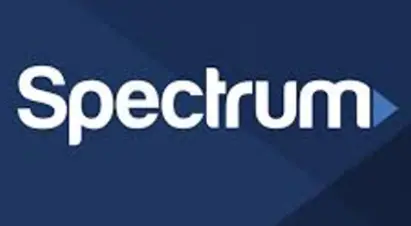
Advertisers above have met our
strict standards for business conduct.

